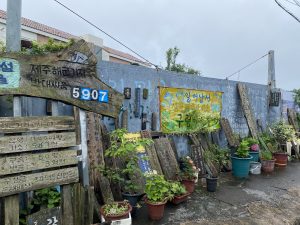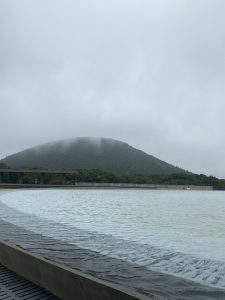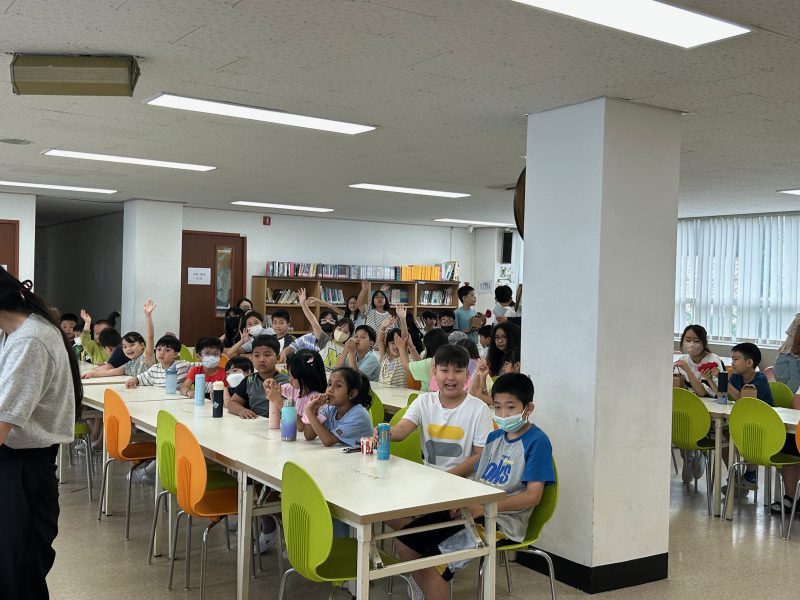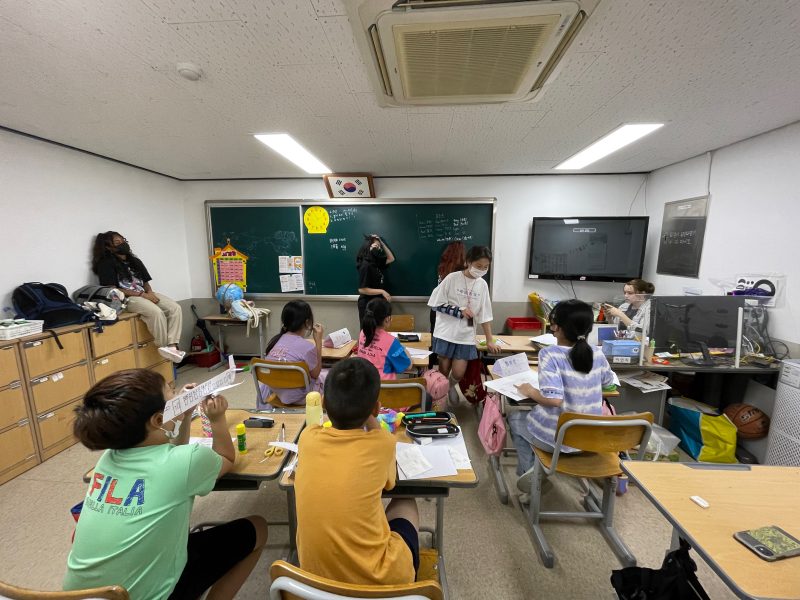Knowingly an island of natural wonders and less knowingly an island of suppressed tragedies, the history of Jeju Island is one of intricate complexities and heavy nuance. Although we prepared for our trip to Jeju by learning about the April 3rd Incident through a brief reading and video, I had no idea the emotions I would be feeling throughout our 3-day stay on the island. We began our exploration of Jeju by participating in a guided tour of Geomun Oreum. Although we were met with an unexpectedly harsh downpour, we were still able to reach the highest peak of the defunct volcano (at 456 m) and admire all of the green that surrounded us. During our walk through the trail, we spotted several underground tunnels that were built by the Japanese military during the Pacific War. This made me realize that such a beautiful scene and landscape could hold remnants of a time of immense conflict, occupation, colonialism, and resistance.

Our next glimpse into Jeju’s past was a guided tour of Gangjeong Village where the construction of a naval base has sparked much controversy, outrage, and protest from the locals. It was both heart-wrenching and heart-warming to hear about the struggles that the Jeju people felt and how they came together in a united effort to preserve the island’s rich culture and natural beauty. During our visit, I couldn’t help but draw similarities between Jeju Island and the experiences of its resident villagers to those of my home, Okinawa, Japan. The villagers’ plight with the operation of a military base on their precious island resonated with the stories of many Okinawans whose island carries the weight of 32 U.S. military bases. Looking at photographs of the coral reefs before and after the building of Jeju Naval Base showed its devastating environmental impacts. From characteristically colorful and visually dynamic to dull and lifeless, these images reminded me of part of a song called “Shimanchu nu Takara” (“Treasure of the Islanders”) by Okinawa-based J-pop/rock band Begin. The lyrics read: How much do I know/Of the sea of this island where I was born?/The coral reefs that are being tarnished and the fish that are fading away/I don’t know what to do for them (2002). The song attempts to place Okinawa as a distinctive culture within the Japanese nation as a whole that exists outside simple knowledge of tradition, and highlights the many treasures of the island’s inhabitants. Although participating in the “human chain” with protestors of the naval base conjured up conflicting feelings within me, I realized how united and passionate the resident villagers were in their endeavor to show their resistance and protect their island’s irreplaceable treasures.

Our excursion to Jeju Island was many things. Eye-opening. Thought-provoking. (E)motion-packed. I was able to learn a lot about the Jeju uprising— something I had never heard of before and an event that was buried for so long— as well as its lasting impacts from visiting the Jeju 4.3 Peace Park and Memorial and the Jeju National Museum. I am so grateful for our program directors and their hard work to make this trip to Jeju happen and organize such an engaging schedule that allowed us to not only appreciate Jeju Island’s beauty but also its deep history, strength, and resilience.

~ Riana Coffman




